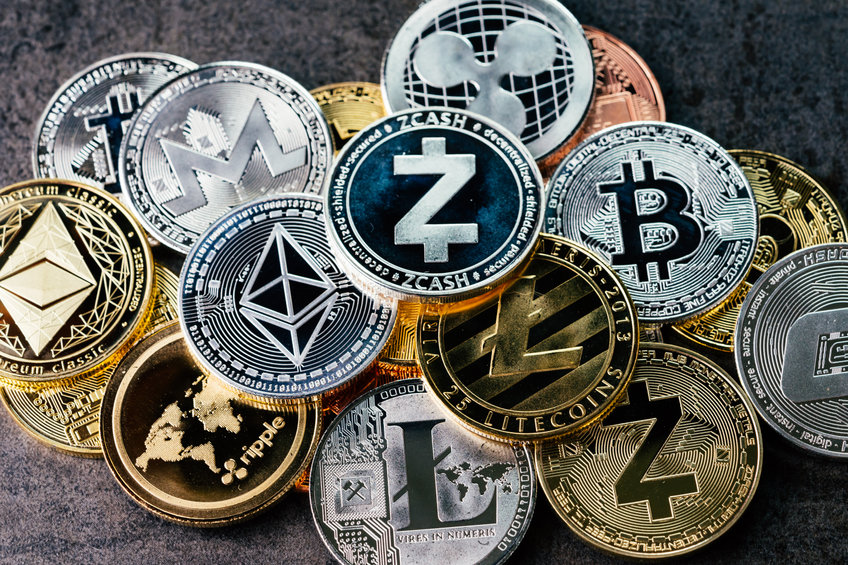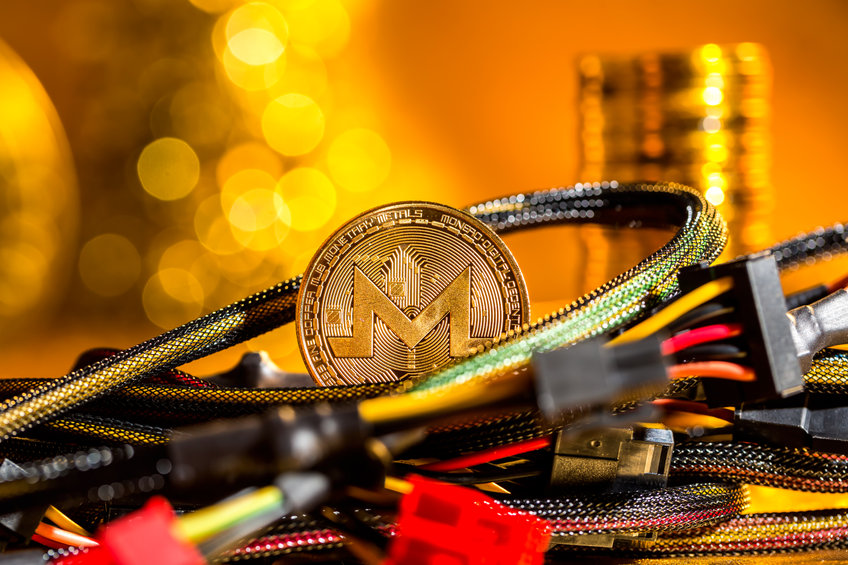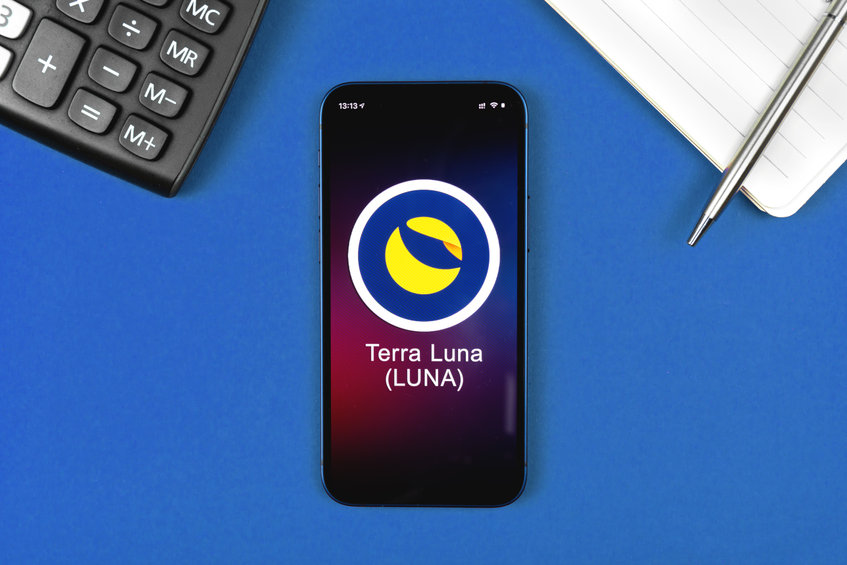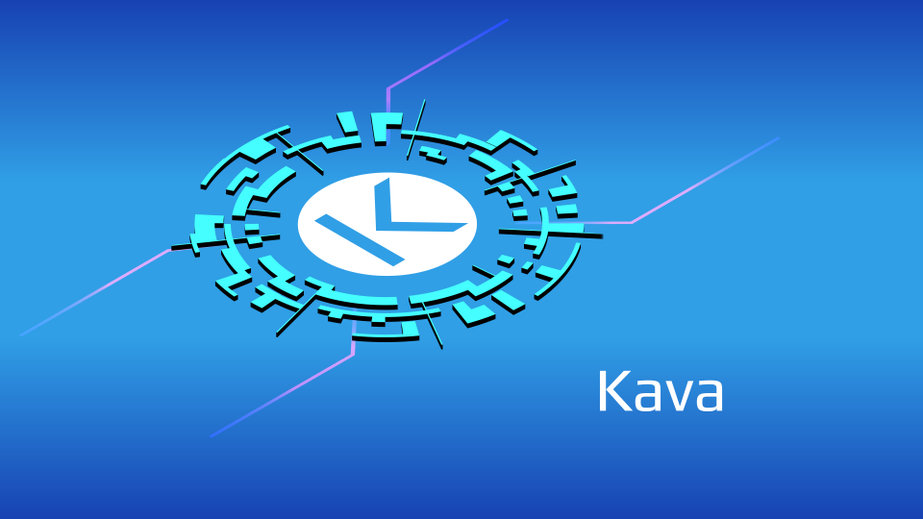
Ein neuer Großinvestor hat die psychologisch wichtige 50.000 US-Dollar-Marke erneut zum Widerstand für Bitcoin gemacht.

Finanzmittel Info + Krypto + Geld + Gold
Krypto minen, NFT minten, Gold schürfen und Geld drucken

Ein neuer Großinvestor hat die psychologisch wichtige 50.000 US-Dollar-Marke erneut zum Widerstand für Bitcoin gemacht.

2021 was a great investment for some of us. Some rode the dogecoin bubble, some turned billionaires from Ethereum’s all-time highs while unfortunately, some missed out on the biggest bull moves of the decade.
But what if there was a way to know about these moves before they happened? What if you could discover the top 5 best altcoins you can invest in for 2022. If you ever wondered about that, today’s your lucky day because, in this article, we will explore 5 of the best altcoins you can put your money in the coming year.
LUNA is a cryptocurrency developed by Terraform- a lab owned by Do Kwon and Daniel Shin. It is being hosted on the Terra blockchain. Terra blockchain, like Ethereum blockchain, is a specialized blockchain.
It is a blockchain network that works around the volatile nature of cryptocurrencies. It utilizes algorithms that produce stable coins or crypto assets with stable values. This is achieved by linking them with external assets like gold or US dollars.
The Terra protocol helps in creating fiat-like crypto assets that have a public ledger and is settled instantly with low transaction fees. It is the first of a kind. LUNA is the native staking token of the Terra blockchain which is used in mining and for governance.
By governance, this implies that users and validators have the power to effect changes to the blockchain. They submit, vote, and implement proposals. If you invest in LUNA, you can earn more by staking it with validators. These are the people who record and verify transactions on the blockchain to earn rewards from gas, stability fees, and swap fees.
The more users interact with the Terra protocol, the more the value of LUNA will increase. Like Ethereum that opened the doors to smart contracts, thereby increasing in value with time, LUNA is the next in line with the need for more stable coins. As we are drawing nearer to 2022, you can add some LUNA to your portfolio to avoid missing out in the long run.
LUNA is currently trading at $92.90 with a market cap of $31.1b. You can buy it on Binance, KuCoin, MEXC Global, and Hotbit, among others. It is currently ranked ninth on both CoinMarketCap and Coingecko.
AAVE is the native token of Aave. Aave is a decentralized lending platform that oversees the lending and borrowing of crypto assets. Users borrow, lend, and earn interests without the involvement of a third party.
Aave was founded by Stani Kulechov in 2017 under the name ETHLend. However, in September 2018, the name was changed to Aave, during which it changed from a system that pairs lenders and borrowers (that is, a P2P lending system) to a funds pooling system.
This change made earning of interests easier and faster. The Aave protocol operates on the Ethereum blockchain, and it allows users to lend and borrow about 30 cryptocurrencies, including ETH, MANA, BAT, and so on. It is aimed towards creating an open-source ecosystem where decentralized lending services can be easily accessed.
Holders of AAVE don’t get charged a fee if they take out AAVE loans. Likewise, they get a discount on fees if they use AAVE as collateral. Similarly, they can borrow slightly more if they use AAVE as their collateral.
Asides from the lending services, the Aave protocol offers other products like Aave Pay, Aave Clearing, and Aave gaming among others. Investors earn from Aave by lending or holding AAVE. As a lender, you will enjoy over 3% annual percentage yield.
You can also generate profits by taking out flash loans. Flash loans are issued and settled within the same transaction before another block is formed (13 seconds) and require no collateral.
AAVE derives its value from playing a central role in managing the Aave protocol. It allows users to decide the changes they want to see in its rules and protocols. Also, it derives value from its limited supply. This is due to burning 80% of fees generated from services. Limiting its supply will help increase its value if demand remains constant.
With the growth in the adoption of cryptocurrencies, there would be a need for decentralized lending services also. AAVE is currently trading at $225.95 with a market cap of $3.04b. You can buy AAVE on Binance, OKEx, and MEXC Global.
Solana (SOL) is the native token of the Solana blockchain platform. It shares similarities with the Ethereum blockchain.
The Solana blockchain was launched in April 2019 to host decentralized scalable and user-friendly applications by the Solana Foundation.
Asides from serving as a cryptocurrency, it can be used as smart contracts that execute the terms of a contract automatically when the necessary conditions are met. It can be used to run non-fungible tokens. Also, it can be used to create and use permissionless decentralized financial systems.
Similarly, it can be used to create decentralized applications such as games, healthcare, social media, etc. It operates a censorship-resistant network in verifying transactions with its proof-of-history model, alongside the proof-of-stake model. This allows swift and secure processing of transactions.
Since its launch, SOL has experienced over an 11,000% increase to reach an all-time high of $259 from about $1. It currently trades at $179 with a market cap of $55.4b. It is ranked the fifth cryptocurrency of all time behind BTC, ETH, and BNB.
Due to its shared similarity with the Ethereum blockchain, investors compare it with ETH. However, unlike ETH, Solana is already operating on a proof-of-stake model. Also, Solana can process more transactions per second with an average cost of $0.00025 per transaction compared to Ethereum.
It is bound to increase due to the high return on its risk profiles while still being volatile. It is certainly one of the altcoins to invest in for 2022. You can buy SOL on Binance, Huobi Global, Gate.io, Poloniex, etc.
ADA is the native token of the Cardano blockchain used in facilitating P2P transactions. The Cardano blockchain is an open-source decentralized platform that runs on a proof-of-stake model called Ouroboros.
It was initially launched in September 2017. It was created to solve the problems, such as interoperability, scalability, and regulatory compliance faced by other cryptocurrencies. It was founded by Charles Hoskinson and Jeremy Wood. It is one of the first blockchains built using the Haskell programming language.
The Cardano blockchain can be used to run smart contracts and develop secure and scalable decentralized applications (dApps). It has two layers- the settlement and the computation layers.
The settlement layer is similar to Bitcoin. It keeps track of the transfer of ADA between accounts and records transactions. The computation layer allows smart contracts and dApps to run on the platform, similar to Ethereum. It also has a platform called Marlowe, where non-programmers can build applications without prior coding knowledge.
Similarly, it has a programming language for writing smart contracts in the Cardano blockchain, Plutus, which allows developers to build dApps on the blockchain. It is one of the largest cryptocurrencies operating on the proof-of-stake model. Consequently, it is seen as an eco-friendly alternative to the like of BTC and ETH that uses the proof-of-work model.
These technical changes and the continuous adoption of DeFi and smart contracts can help drive the price performance of ADA to come 2022. With the possibility of staking protocols and developing dApps, investing in ADA is a must in 2022. It should be noted that ADA gets its value from being used to facilitate transactions and participate in blockchain governance.
It is currently ranked seventh with a market cap of $44.4b. It is trading at $1.38. ADA can be found on Binance, MEXC Global, Hotbit, BitMart, and so on.
Polkadot is a project developed by the Web3 Foundation aimed at facilitating distributed computing. It will serve as a foundation upon which users/developers can create and run their blockchains, just like Ethereum and Cosmos among others.
It was founded by Gavin Woods, Robert Habermeier, and Peter Czaban in 2016 to solve the problems of scalability and governance faced by other cryptocurrencies. It seeks to create a decentralized web where users are in control.
The Polkadot network is designed to run three types of blockchains, including the relay chain, parallelized chain (parachain), and bridges. The relay chain is the main network where other blockchains connect and process transactions. This makes it possible to process over 1000 transactions per second.
Also, this allows for cross-chain interoperability. The parachain constitute user-created networks that use the computing resources of the main network to conduct their transactions. The bridges would allow the Polkadot network to interact with other blockchains without a central party.
Unlike other blockchains, it gives developers a means to create value across blockchains using the Polkadot network. DOT is the native token of the network and is important in running and maintaining the Polkadot network. It is used to pay network fees when data is exchanged between two blockchains. It is useful in validating rights for interoperability.
Also, by owning and staking DOT, users can vote on network upgrades or fixes. With time, the network will grow into a multi-chain platform where users can interact with numerous blockchains and share data, communicate, bad exchange tokens. As an investor, DOT is a worthy investment as you would be earning an annual percentage yield of 10% on average.
DOT is currently ranked 10th on Coingecko with a market cap of $29.2b. It is trading at $27.4 and can be bought on Binance, Kraken, Nominex, FTX, Bitrue, and so on.
It should be noted that investing in cryptocurrency is very risky, but if you must invest with something, you can easily part ways with peradventure there’s excess loss. Don’t be discouraged by this, as the returns in the crypto space are astonishing. Always do your own research and dollar-cost averaging.
The post Top 5 Best Altcoins to Invest in for 2022 appeared first on Coin Journal.

Monero (XMR) has seen increased bull activity this week as investors look to add it into their portfolio. Known for its secure and private transactions, the coin has also seen major gains in the last 7 days, surging nearly 15%. We have also seen a surge in trading volume, suggesting more action by buyers. So, is Monero (XMR) a good bet for 2022? Here are some highlights first:
Monero (XMR) has surged 15% this week, buoyed by increased bullish activity.
At the time of writing, the coin was trading at $208.99, down 3% in intraday trading but still up for the week.
The coin is expected to maintain this uptrend, with conservative estimates putting it at $260 by end of 2022.
 Data Source: Tradingview.com
Data Source: Tradingview.com
As noted above, it’s been a decent week for XMR. The coin has followed the broader crypto market in reporting gains, surging 15% in seven days. But most analysts agree that there is enough gas in the tank to take XMR to even bigger heights in 2022. In fact, while conservative estimates are putting the coin at $260, most bullish analysts see Monero crossing well over $300 next year.
Besides, as the risk of regulations in crypto continues to grow in 2022, investors are more likely to flood towards private and secure currencies, including XMR. We are also expecting improved sentiment in the overall crypto market to push XMR even further into gains.
Monero (XMR) has very good long-term potential. The coin has very positive outlooks for 2022, and the underlying fundamentals are quite decent as well. For long-term investing, the coin gives investors a good chance to unlock value. Also, XMR is expected to maintain its recent uptrend in the near term, also making a good bet for short-term gains.
The post Monero (XMR) sees increased bull activity this week – is it a good buy for 2022? appeared first on Coin Journal.

Terra (LUNA) has reached all-time highs in intraday trading today. The coin went above the $100 mark for the first time. It has however retreated slightly below that but is still nearly 3% up for the day. The rally was largely triggered by increasing positive buzz around layer 1 blockchains. Other similar networks like Solana (SOL) and Avalanche (AVAX) also rallied. Here is what we know so far:
At the time of writing, Terra (LUNA) was trading at around $99.30, but it had surged above $100 in intraday trading.
The bullish price action was also seen in other similar Layer-1 chains, including Solana and Avalanche (AVAX).
The rally is likely to hold as investors continue to bet big on Layer-1 blockchains.
 Data Source: Tradingview.com
Data Source: Tradingview.com
It seems like a very long term ago when Terra (LUNA) was trading slightly above its $54 support. This was even after the coin had rallied nearly 25%. But that was merely a week ago, and it shows you just how fast things can change in crypto.
Over the past few days, LUNA has been gaining upward momentum. But not even the most optimistic analysts saw the coin surging towards its all-time highs before the end of the year. It is indeed a Christmas surprise, and we expect this bullish upturn to hold for longer.
Terra (LUNA) has always been a good investment based on its underlying fundamentals. The chain has seen explosive growth this year too. However, it is the growing interest in Layer-1 blockchains that makes LUNA such a promising project.
In fact, the recent surge to all-time highs was inspired by the positive buzz around Layer-1 solutions. Although the chain faces competition from major players in this space like Solana (SOL), it still offers the promise of excellent returns in the long run. You should therefore consider buying it.
The post Positive buzz on Layer-1 networks pushes Terra (LUNA) to all-time highs – can it hold the momentum? appeared first on Coin Journal.

When the Kava (KAVA) DeFi protocol launched in 2019, it was dubbed one of the most promising projects in decentralised finance. At the time, a single KAVA, the native token for the protocol, was trading at $0.95 or thereabout. Ever since the token has had highs and lows with price swings all over. However, in September this year, KAVA saw all-time highs of $14.38. So, can the token regain this lofty crown again in the near term? First, some highlights.
Despite surging to $14.38 in September, a massive correction ensued, sending KAVA on a downward spiral.
At the time of writing, the coin was trading at $4.03, nearly 72% from its September highs.
However, KAVA has still delivered an ROI of 668% since it was launched in 2019.
 Data Source: Tradingview.com
Data Source: Tradingview.com
The last two months have been brutal in crypto. Most coins, including DeFi tokens, went through a market-wide correction. It was therefore likely that KAVA would see increased bear pressure on its price. But it’s really fallen massively from its all-time high this year.
It’s also highly unlikely we are going to see the token surge back to those levels in the near term. However, the coin has consolidated around $4, and as such, a short-term bullish burst could be on the cards. Besides, demand for DeFi tokens is set to grow in 2022, something that could benefit KAVA.
In case you are looking for decent investments in DeFi, then KAVA is a very good bet. Yes, the token has seen some major headwinds in recent months. But as the broader crypto market recovers, DeFi tokens will be top in the growth list. As such, KAVA and other major DeFi tokens are likely to see immense long-term value.
The post Can Kava (KAVA) retrace its September all-time high? Price analysis and prediction appeared first on Coin Journal.